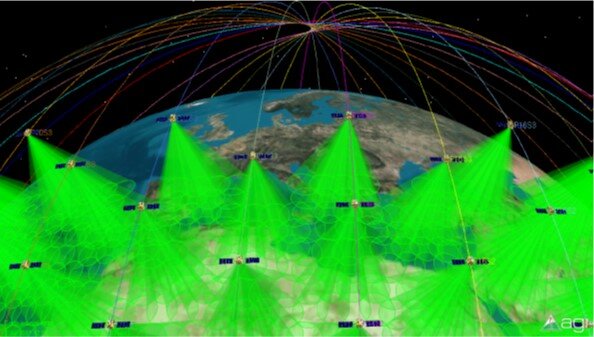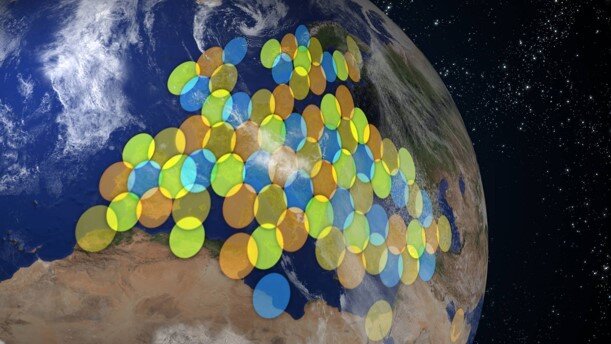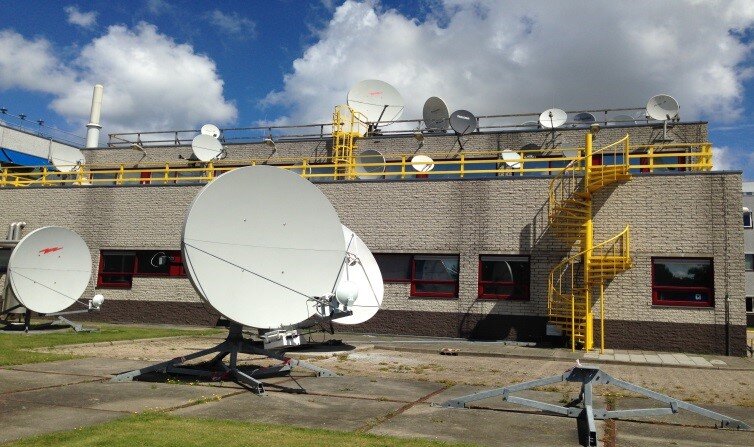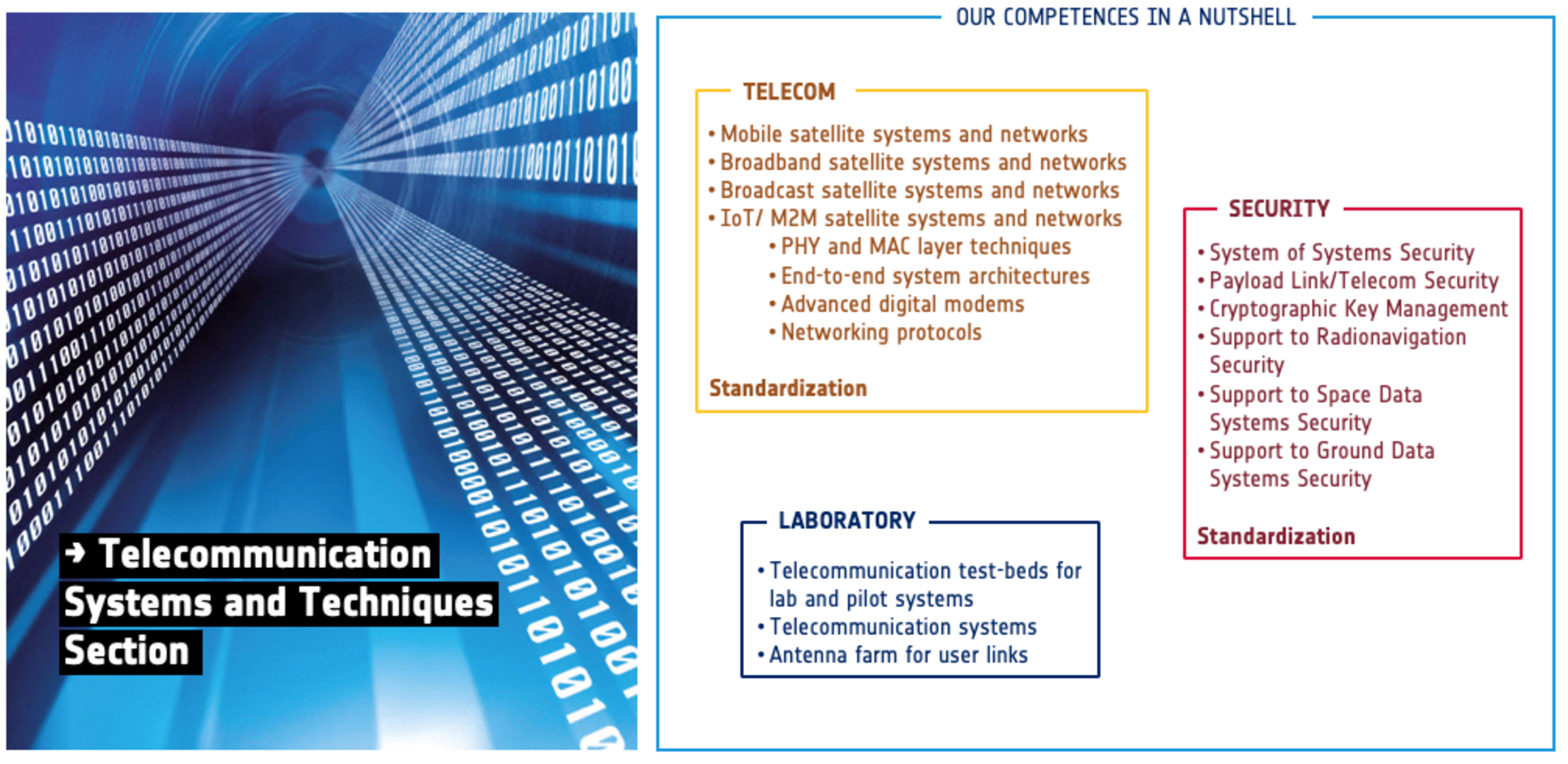Telecommunication Systems and Techniques
What we do

ESA’s Telecommunications Systems and Techniques section has expertise in the fields of satellite-based telecommunications links, holding responsibility for the development of advanced telecommunications systems, techniques and technologies for broadband, broadcast and mobile satellite communication applications, as well as for payload data transmission – returning space-based scientific or operational findings to Earth.
Historically satellite-based telecommunications have connected the world, and evolved into the single largest commercial element of the space sector. But this is currently a sector in transition, with the emergence of low-Earth orbit megaconstellations for lower-latency communications and the coming of 5G, set to include crucial roles for satellite systems.

The Telecommunications Systems and Techniques section is actively engaged with these changes, giving technical advice to industry in ESA Member States as well as serving the needs of ESA projects. The section also represents the Agency in important international standardisation fora, such as Digital Video Broadcast and the 3GPP (Third Generation Partnership Project) for the inclusion of 5G in satellite networks, as well as the Consultative Committee for Space Data Systems (CCSDS), on telecommunications and security topics.
Expertise

Our telecommunications expertise includes:
Telecom, payload and ground architecture: covering the architectural design of broadcast, broadband, narrowband satellite payloads and associated ground segment, system performance assessment and optimisation
Telecom system engineering: satellite telecom systems and sub-systems analysis design and performance analysis; engineering tools; communication test beds and software tools for laboratory and pilot satellite systems
Telecom signal processing: techniques and algorithms related to (de)coding, (de)modulation, access, synchronisation, medium access control

Telecom networks: broadcast and broadband applications, IP networking, quality of service, network management, traffic models and performance
Telecom equipment: baseband telecom equipment (e.g. modulator, demodulators, front ends...) used for fixed, mobile and broadcast satellite or hybrid satellite/terrestrial telecom systems, including also user terminals.
We also focus on the end-to-end security of telecommunications systems:
Systems of systems security: ensuring integrity within heterogeneous telecom systems collaborating to fulfill an overall function
Payload link/telecom security and cryptographic key management: ensuring commnuications links remain secure

Radio navigation security: including support for Europe’s Galileo and EGNOS satellite navigation systems
Space data systems security: safeguarding the integrity of satellites and space-based systems
Ground data systems security: safeguarding the terrestrial infrastructure supporting space missions.
Our expertise also extends beyond the radio frequency regime into optical communication systems, including waveform design, ground network, payload sizing, system analysis, link budget and standardisation for optical inter-satellite systems, LEO to ground, GEO feeder, data relay, and deep space link scenarios.
Telecom Laboratory
The section makes extensive use of ESA’s Telecom Laboratory, based at the Agency’s ESTEC technical centre in the Netherlands. The Lab includes state-of-the-art operational and test equipment supporting the experimentation of advanced satcom technologies, such as testbeds for pilot systems and an antenna farm for user links.
Examples of R&D activities

Aeroterminal Visibility and Peformance System Simulator, AEROSIM: evaluating the performance of aircraft satellite communications throughout all stages of flight, including low altitude flying and high pitch and roll angles which can lead to link loss, coupled with a physical layer simulation to calculate signal degradation
Beam-hopping satellite systems: similarly to terrestrial cellular networks, satellite signals are directionally split into beams serving specific cells, typically time-multiplexed. Beam-hopping involves reconfiguring beam switching based on changing traffic demands and user locations, increasing capacity and decreasing power consumption
Payload Optimisation Tool for Satellites Based on Active Antennas and On-Board Processing, SPATIAL: responding to industry need for flexible and re-configurable payloads based in particular on active antennas and flexible on-board processors, but a payload optimisation tool is required to speedily model payload configurations on a functional basis
5G Technical Support: identifying varied satellite use cases for 5G, from backhauling to the internet of things, as well as working on 5G Non-Terrestrial Network standards.















 Germany
Germany
 Austria
Austria
 Belgium
Belgium
 Denmark
Denmark
 Spain
Spain
 Estonia
Estonia
 Finland
Finland
 France
France
 Greece
Greece
 Hungary
Hungary
 Ireland
Ireland
 Italy
Italy
 Luxembourg
Luxembourg
 Norway
Norway
 The Netherlands
The Netherlands
 Poland
Poland
 Portugal
Portugal
 Czechia
Czechia
 Romania
Romania
 United Kingdom
United Kingdom
 Slovenia
Slovenia
 Sweden
Sweden
 Switzerland
Switzerland


























